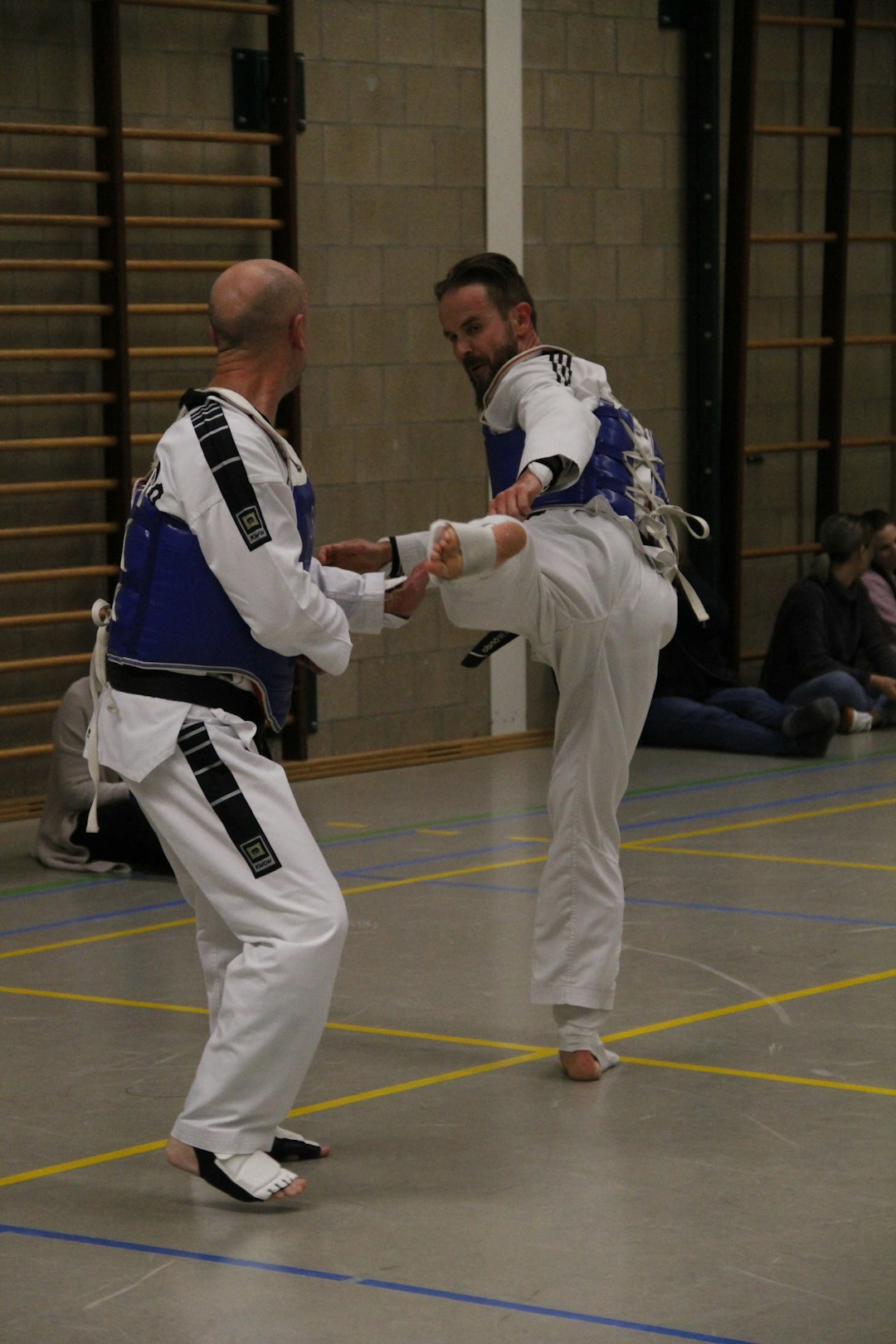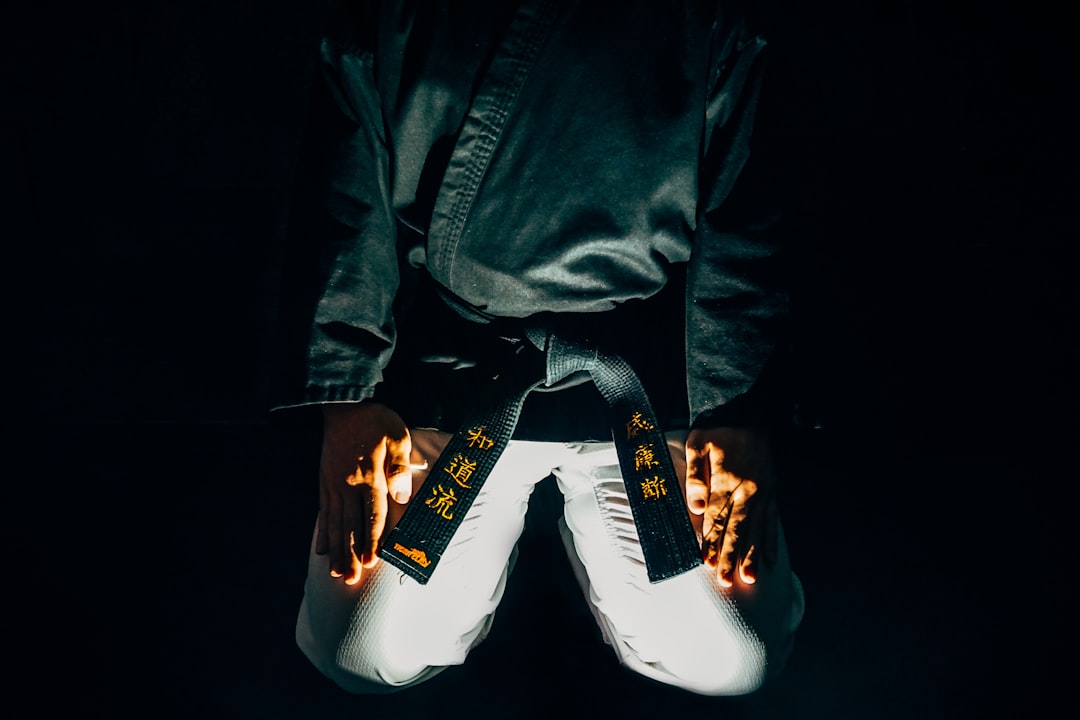The traditional karate uniform, known as a "keikogi" or "gi," is both a cultural symbol and a practical training garment. It consists of a jacket, trousers, and belt, with the color and style often indicating the wearer's rank in karate. The gi is designed for comfort, mobility, and to uphold traditional values during practice and competition. The fabric, typically cotton or hemp, ensures breathability and durability. While the white keikogi with black accents is standard, variations exist, reflecting regional styles and affiliations within the martial arts community. The uniform's role has evolved over time to balance tradition with modern demands, ensuring that karate practitioners, or "karateka," can perform techniques effectively while maintaining a sense of discipline and respect for the art. Today's keikogi or dogi allows for personal expression and is recognized in international competitions, cementing its significance as a tangible representation of karate's rich history and adaptable nature.
Embark on a journey through the discipline of karate, where the attire is not merely clothing but a symbol of tradition and respect. Known as a “Karate Uniform” or more commonly, a “Gi,” this garment serves as a gateway to understanding the depth of karate culture. Our exploration delves into the significance of this apparel, its design elements that optimize functionality for practitioners, and how historical practices have evolved over time to form the modern variations seen today. Join us as we uncover the name and essence of the karate outfit that has stood the test of time in “The Essentials: The Significance of a Karate Uniform,” “The Anatomy of a Karate Gi: Design and Functionality,” and “Evolving Traditions: Historical Aspects and Modern Variations in Karate Attire.”
- Unveiling the Essentials: The Significance of a Karate Uniform
- The Anatomy of a Karate Gi: Design and Functionality
- Evolving Traditions: Historical Aspects and Modern Variations in Karate Attire
Unveiling the Essentials: The Significance of a Karate Uniform

When engaging in the discipline of karate, the practitioner’s attire plays a pivotal role not just in their comfort and mobility but also in reflecting the traditional values inherent to the martial art. The garment in question, often referred to as a “gi” or “keikogi,” is the quintessential karate uniform. This two-piece outfit, consisting of a jacket and trousers, is designed to facilitate seamless movement during practice and competition. The top, a jacket, typically features a closed collar and is tied at the waist with a belt, symbolizing the discipline and focus required in karate. The trousers, on the other hand, are straight-legged and hemmed to just above the ankle, allowing for unobstructed movement and a full range of motion. The color and style of the gi can vary, often reflecting the rank or level of the wearer; beginners may start with white gis, while advanced practitioners might don black ones. Are the components of the karate uniform interchangeable? Not typically; the jacket and trousers are designed to be worn together as a set for consistency and traditional presentation. The choice of fabric, usually cotton or hemp, ensures breathability and durability during rigorous training sessions. What is the name of the karate uniform? It is called a “keikogi” or simply a “gi,” which is the respectful term for the traditional karate outfit.
The Anatomy of a Karate Gi: Design and Functionality

When practitioners of karate step onto the mat, they don their traditional attire, a garment known as a “Karate Gi.” This uniform is more than just a simple piece of clothing; it is a symbol of respect and discipline within the martial arts community. The Gi’s design incorporates elements that cater to both functionality and tradition. Typically, it consists of a jacket, trousers, and a belt, which together provide a canvas for learning and growth in karate practice. The jacket, or “Uwagi,” is cut long enough to tuck in completely when belted, ensuring full mobility during practice. It is usually made of heavy cotton or hemp fabric, allowing for breathability while providing durability for the rigorous movements involved in karate techniques. The trousers, known as “Nogi,” are straight-legged and also made from the same sturdy material, designed to withstand the strain of repetitive bowing, kneeling, and stretching exercises.
The sizing and cut of a Karate Gi are tailored to accommodate the range of motion necessary for effective practice. The sleeves are neither too tight nor too loose, allowing for a full range of arm movements, while the trousers are wide enough to facilitate ease of movement without being so baggy as to hinder the practitioner. The belt, or “Obi,” is not only a functional component that secures the Gi but also a status indicator, with different colors representing different levels of skill and rank within the discipline. The design and functionality of the Karate Gi are integral to the practice; it is both a uniform and a tool that supports the martial artist’s journey in karate.
Evolving Traditions: Historical Aspects and Modern Variations in Karate Attire

Karate, a discipline rooted in the Ryukyu Islands of Japan and now practiced globally, has seen its traditions evolve over time, particularly in terms of the attire worn by practitioners. Historically, the karate uniform, known as a ‘keikogi’ or ‘dogi’, served a practical purpose: to facilitate movement and protect the wearer from abrasions during training. Over the years, the keikogi has retained its basic design but has undergone subtle changes in color and cut to meet the needs of different martial arts schools and regional preferences. Today, while most karatekas adhere to a standardized white uniform with black belts and trim, some styles maintain unique traditions, such as Okinawan karate, which may incorporate traditional Okinawan patterns or colors into their keikogi. The evolution of the karate uniform reflects both the preservation of cultural heritage and the adaptation to modern practices within the sport.
In the realm of competitive karate, the uniform has become standardized, ensuring fairness and consistency among participants. However, do the variations in color or design across different brands and schools affect the performance or aesthetics of karate? While the white keikogi remains the most common, other colors like blue or beige are also recognized in international competitions. These modern variations not only cater to personal preference but also serve as a means for practitioners to express their affiliation with particular karate styles or schools. The karate uniform name, ‘keikogi’ or ‘dogi’, thus remains a testament to the discipline’s rich history while accommodating contemporary tastes and practices.
In conclusion, the karate uniform, known as a Gi, is more than mere attire; it is a symbol of tradition and a canvas for function. Its design and functionality have been shaped by both historical significance and modern adaptations, each variation reflecting the rich heritage and diverse practices within the art of karate. Whether one practices Shotokan, Goju-ryu, or any other style, the Gi serves as a unifying element, underscoring the universal respect for discipline and respect that karate embodies. Understanding the karate uniform name and its evolution provides insight into the deeper layers of this martial art, emphasizing the importance of proper attire in honoring and participating in this timeless practice.
